
DB Floatman
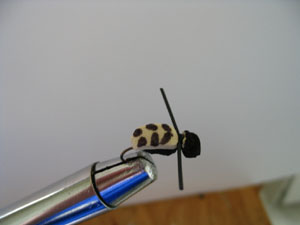
Hook: #10-16 Mustad Dry Fly Hook
Body: Black and Light-Tan Sheet Foam
Legs: Black Rubber Hackle
Underbody: Silver Tinsel
Head: Black Sheet Foam
Shellback Details: Permanent Felt Marker (black)

Step 1: Cut a thin strip of light-tan sheet foam, and tie it in. This will be pulled forward later on, and used as the shellback of the fly.
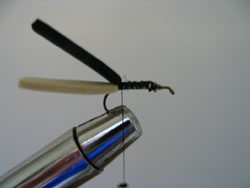
Step 2: Cut a thin strip of black sheet foam and tie it in. This
will be pulled forward later on, and used as the body of the fly.
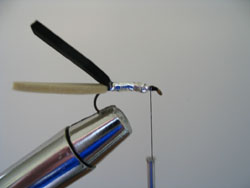
Step 3: Tie in and wrap the underbody, using silver tinsel. I like to use head cement on the tinsel after it is wrapped in, to give the fly additional durability and shine.
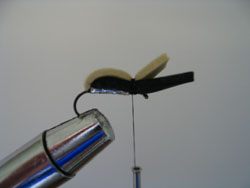
Step 4: Pull both the black sheet foam and the light-tan sheet foam towards the front of the hook and tie them in about 3/4 of the way up the shank. Start using loose wraps of thread, then slowly tighten your wraps in order to prevent thread breakage.
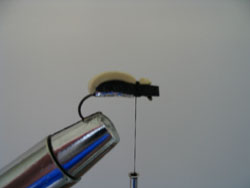
Step 5: Trim the excess light-tan foam off, leaving a very small tag of it on top of the black foam. Then trim the black sheet foam into a nice, rounded head.
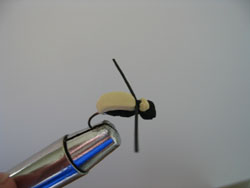
Step 6: Tie in a strip of your black rubber hackle behind the head. Tie in the legs by using a figure-eight motion, making sure that the legs on both sides are trimmed to the same length and are tied in at the same angle.
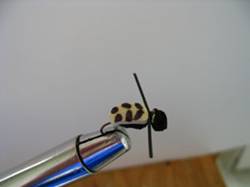
Step 7: Whip finish the fly and use a permanent felt marker to add detail to the shellback of the boatman. Finish the fly off by adding a good amount of head cement to both the back, and the underbody of the fly. This will increase the life of your DB Floatman.
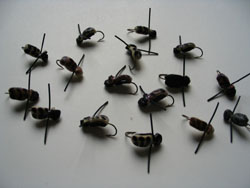
Final Step: Tie up a lot of these flies, especially if heading out in the fall time or if you're going fishing with some buddies, because chances are they'll want to get in on the action with one of these flies too. Try different coloration on different lakes, although I've found that most of my bigger fish have come on the light-tan/black combo. Since this fly floats, it is most productive when fished on an intermediate sinking line with a couple feet of tippet. Watch for a rise, cast this fly out, give the sinking line time to sink, and work it back in a diving/darting motion. Most of the big fish will smash this fly on your initial strip, as it dives downwards from the surface, just like the naturals do during a boatman fall. My biggest lake rainbows have come on this fly, and I hope yours do as well! Tight lines!
Fly Tied By: Andy Tchir
Pattern By: Andy Tchir